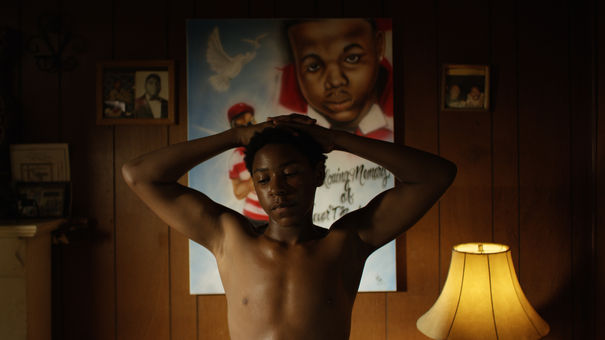Growing up in the Deep South
By Petra Meterc

Film still from DAYVEON
DAYVEON by American director-composer Amman Abbasi is screening in Berlinale Forum and is also cross-sectioned with Generation 14+. It seems as though the director himself wasn't quite sure whether he wanted to make a slice-of-life art film or a coming-of-age drama. The film depicts the 13-year-old boy Dayveon living near Little Rock, Arkansas, who, having lost his brother in a gang-related shoot-out, lives with his sister’s family. He spends his time as most of the boys his age do: riding bicycles, playing video games, scrolling on their phones, smoking blunts. However, in this poverty-stricken rural environment, free time also involves joining a local gang.
The cinematographic portrayal of Dayveon and those close to him, well-executed by DOP Dustin Lane, mixes a documentary approach with a stylized blurring in and out in scenes of movement, as well as playing with natural light by illuminating faces or various interior spaces. On the other hand, the 4:3 Academy ratio framing works well with symmetrical compositions of bodies in small rooms, as well as with the many close-ups which emphasize the personal perspective that the film adopts. The close-ups often completely cut-out the surroundings and the camera lingers on characters’ faces or even parts of their faces which brings intimacy to these characters portrayed by non-professional actors. Their introspective expressions are highlighted within these everyday scenes.
Rather than the typical depiction of urban gang-violence, refreshingly, Abbasi chooses to focus on teenage gangs within a rural environment. For research, the director workshopped the script with several boys involved in gangs, however the film would have worked better without the all too familiar narrative tropes. There are many clichés that appear in the otherwise casual dialogues, and the melodramatic Yann Tiersen-like piano score feels like Abbasi is instructing us on how to feel. The ongoing metaphor of swarming bees, the interpretation of which preoccupied the audience during the Q&A, didn’t seem to get its point across either. All in all, the realistic violence and threatening atmosphere together with the poetic cinematography would suffice – they are effective on their own and do not need to be explained through the one-dimensional script which should either be more unconventional or completely minimized.

